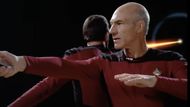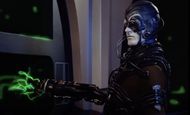While Star Trek: Enterprise had its distinct identity as a prequel series, its finale intentionally brought in characters and settings from Star Trek: The Next Generation (TNG) to do one key thing right — to bridge the timeline gap and acknowledge legacy.
Enterprise ended without ever being directly referenced in either TNG or DS9, or Voyager. By framing the final episode as a holodeck simulation aboard the USS Enterprise-D, the show inserted Enterprise directly into a wider Star Trek continuity. Moreover, it established Archer's crew's place in history, while suggesting that future Starfleet officers still respect their legacy. Read on to know in detail.
** Disclaimer: The article is based on the writer's opinion. **
Here is how Star Trek: The Next Generation helped Star Trek: Enterprise’s finale do one thing right

Many fans and even cast members like Jonathan Frakes and Jolene Blalock have criticised the episode for making Enterprise's finale about Star Trek: The Next Generation's characters, and not the Enterprise crew. Another disappointment for them was killing off Trip Tucker, as they saw it narratively unnecessary. They felt the finale felt more like an episode from Star Trek: The Next Generation and not the Enterprise.
Yet, the franchise did what few other Trek shows barely attempted — to connect the dots across timelines and gave Enterprise a place in the Federation mythos.
Using Riker's holodeck session during the TNG episode, titled The Pegasus, allowed the writers to use a familiar face to frame the importance of Archer's crew. This also helped in making the Enterprise feel respected and remembered by dropping a soft retcon of the "forgotten" status of the NX-01 missions in future Trek lore.
Enterprise is set over 200 years apart from the other 24th century Star Trek shows

Enterprise was set over 200 years before The Next Generation. Therefore, despite Archer's significant role in forming the United Federation of Planets, there is no mention of the NX-01 crew in the 24th-century shows like TNG, DS9, or Voyager. This made Enterprise’s massive contributions — like first contact with key species and early interstellar diplomacy — feel unacknowledged or forgotten.
Therefore, this absence in TNG was not malicious, but was simply because of the time gap both shows come with. For the first time, the franchise tried to stitch together the long-divided eras in the finale of the Enterprise.
On the other hand, Holodeck Framework was indeed a smart choice because it allowed for a crossover without affecting the continuity of the shows. It also helped draw an emotional parallel of Riker questioning his own ethics and the sacrifice of Archer's crew.
